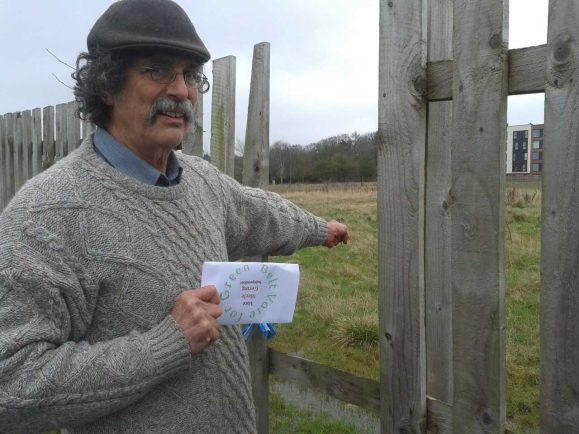THE COUNCIL says there could be even more new homes than currently planned after latest official statistics – despite research refuting a population explosion in Coventry.
Latest Office of National Statistics (ONS) data claims both the city’s projected population growth AND the need for new homes has increased once more.
Coventry City Council cabinet member for housing, Councillor Ed Ruane, has warned residents to expect more developments on top of the 42,400 planned in the council’s controversial Local Plan, which was based on 2012 figures.
Coun Ruane said the Local Plan figures for Coventry’s housebuilding up to 2031 – based on the offical population growth estimates – are a ‘minimum baseline’.
He told Tuesday’s full council meeting – in a written answer – that the latest ONS figures show an increased housing need in Coventry, equating to 2,100 more homes.
It is unclear whether the latest figures include the same disputed methodology and population data used in the ONS’ previous projections.
As we reported, green belt campaigners and residents say ONS data is grossly overestimating Coventry’s future population growth. They point to local data for birth rates in Coventry, schools entrance figures, benefits claims and more.
Campaigner Merle Gering has said ‘ghosts and vampires’ – people supposedly moving to or being born in Coventry – are showing no footprints on any regional statistics that would suggest a rising population.
He says the need for housing in Coventry has been vastly overstated and the city needs thousands fewer than planned.
Mr Gering suggests the true number of houses needed is closer to 18,600.
Council leaders have repeatedly said extra Council Tax revenue from more homes could be spent on council services, and they aspire for population growth to make Coventry a ‘top ten city’.
Coventry’s Local Plan, approved in December 2017, is based on figures from the 2012 ONS sub-national population projections and mid-year estimates.
The Local Plan states there is a projected increase of about 90,000 people from 337,000 between 2011 and 2031 – a rise of nearly a third.
This is forecast to be twice as fast as Birmingham and Rugby, and three times as fast as neighbouring Warwick and Solihull.
It represents the highest predicted growth outside London, campaigners say.
They also say it fails to account for departing graduates despite the student population explosion – and the types of homes needed to cater for real demand.
There is a mechanism within the council’s Local Plan for a review if the ‘whole or a key part of it becomes out of date’.
But it says only ‘substantial and sustained change’ triggers a review.
Opposition councillors have slammed leading Labour councillors who say they will only ‘consider’ a review in March 2021, despite the new evidence.
Campaigners claim the new evidence would render the plan out of date.
The council has come under increasing pressure to review areas of contention within the plan.
These include areas earmarked for thousands of houses such as Keresley and Eastern Green on the rural fringes of the city.
The demands came to a head at a full council meeting yesterday (March 19) in which independent councillor Glenn Williams questioned Labour cabinet member for housing Coun Ed Ruane.
In reference to Mr Gering’s figures, he said: “Is the cabinet member aware of new material evidence which shows that the population forecasts in our Local Plan are grossly overstated; and will he now agree to review the Local Plan as a matter of urgency?”
He added in his written answer: “It is clear that housing need dynamics across Coventry and Warwickshire are continuing in a similar way to other recent projections, in so far as needs originating from Coventry remain increasing and high whilst needs originating across Warwickshire are decreasing.
“In terms of overall need, although there is a reported decline based on current demographic projections, we know that ongoing changes with national standardised methodology and overall government housing targets means actual housing need is likely to increase above initial demographic projections.
“This implies that although these baseline projections are the ‘starting point’ they are to be perceived very much as a minimum baseline with opportunities being taken to increase housing requirements where possible and appropriate through local plan making.”











